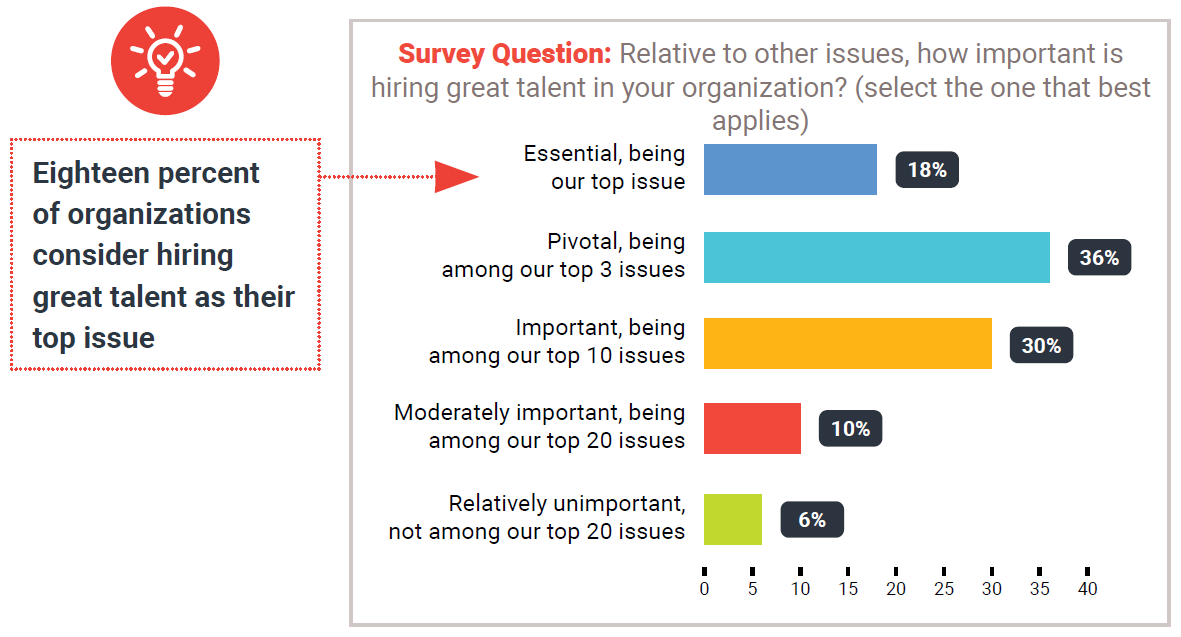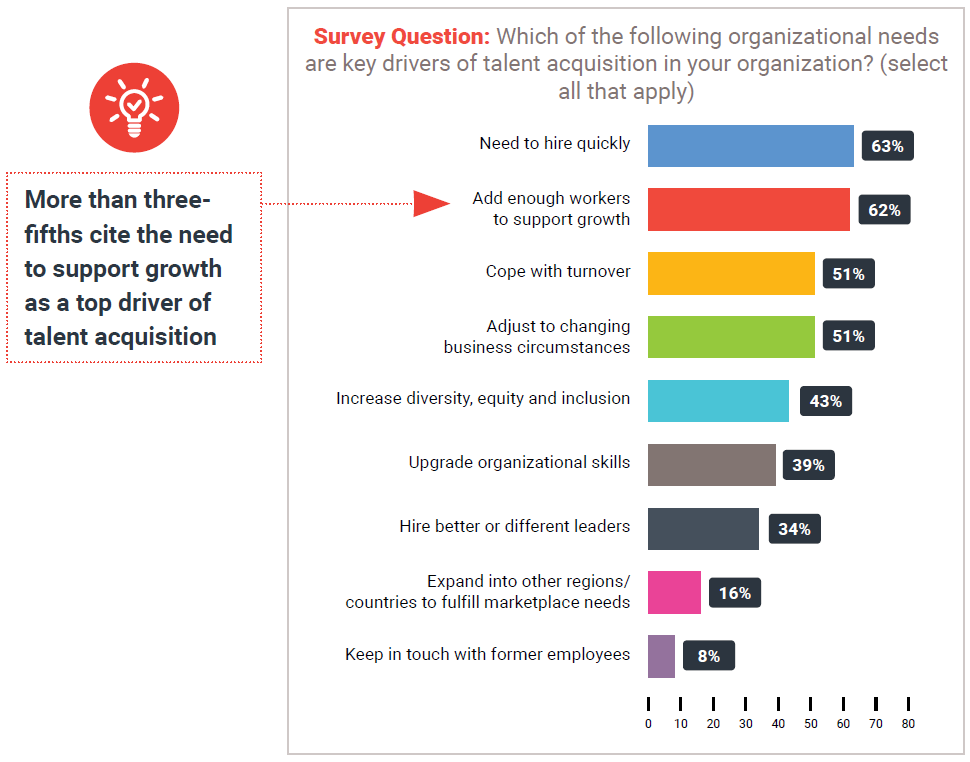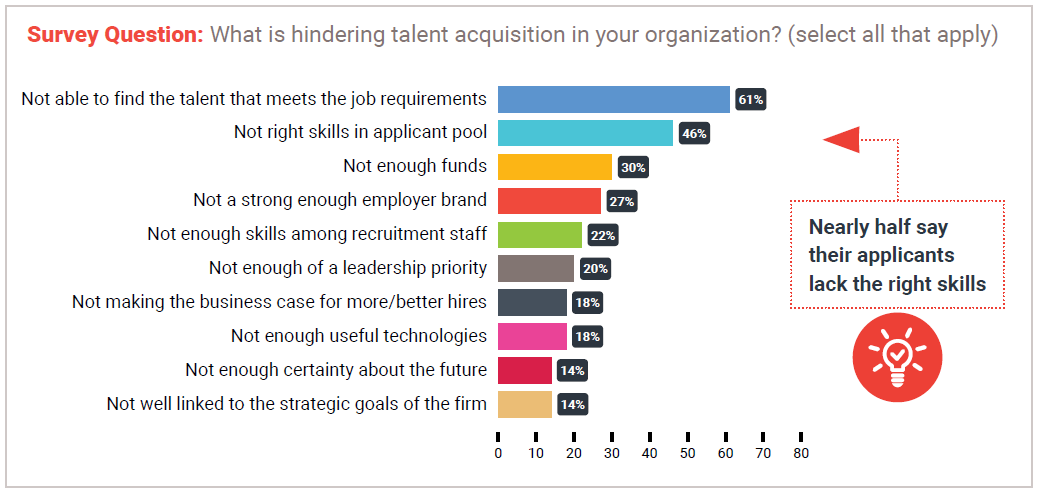
Just over half of organizations say hiring great talent is a top priority
HR departments juggle a set of shifting priorities. Of course, the pandemic threw a big wrench into many organizations’ pre-Covid-19 workforce plans. In 2020, many organizations were handling layoffs or terminations while hiring for many industries was put on hold.
Today, as businesses are rebounding, more focus is being placed on recruiting. In last year’s report, we found that 43% of respondents considered hiring great talent their top or one of their top three priorities relative to other issues they were facing. In our new report, this number jumped to 54%, a significant increase. And only 3% consider it relatively unimportant.
Almost everywhere we turn today, we see businesses struggling to find help, let alone great help, requiring recruiting efforts unlike any we have seen in recent times. Those organizations in desperate need of future talent are likely to suffer unless they can maximize their hiring efforts.
The need to hire quickly is the top driver of talent acquisition
Many businesses find themselves desperately short of help. Be it a restaurant server, drivers for gasoline tankers, or nurses, organizations are finding it more and more difficult to keep their businesses running smoothly. Long consumer delays, poor service quality, supply chain disruption and reduced hours of operation are just some examples of the consequences of talent shortages.
It makes sense, then, that the need to hire quickly has become the top driver for acquiring talent, cited by 63% of participants. In the 2020 study, amid massive downsizings, only 39% cited speed of hire as a key driver. A close second place goes to finding a sufficient supply of talent to support growth, cited by 62% of respondents.
Just over half (51%) say dealing with turnover is an important driver. The cost of turnover can be three to four times a person’s salary and serves as a reminder that both the skills to do a job and a candidate’s motivational fit with the organization should be part of any hiring process.
Another 51% also cite adjusting to changing business circumstances. This driver may have been chosen because of how organizations have adapted to the impact of the Covid-19 pandemic.
By size of organization
Large (66%) organizations are somewhat more likely than small (62%) and mid-size organizations (59%) to indicate they need to hire more people quickly. In addition, large (58%) organizations are more likely than small (42%) and mid-size (30%) organizations to say an increase in diversity and inclusion is one of their key drivers of TA.
The biggest barrier to successful talent acquisition is finding the right talent
Participants are most likely to cite the inability to find the talent that meets their job requirements as the top barrier to talent acquisition success (63%). Another 47% indicate that their current candidate pool lacks the right skill sets.
At this stage, the talent shortage is more than just a challenge for many organizations: it is a crisis. As of June 2021, the U.S. Bureau of Labor estimated that a record 10.1 million U.S. jobs are available.5 Some of this shortage may ease as additional unemployment compensation ends. However, companies will need to rethink what is likely to attract candidates to their organization versus a competitor. We find that organizations of all sizes say that not being able to find the talent that meets the job requirements remains the number one barrier hindering TA.
In the 2020 study, the top barrier was not enough useful recruiting technologies. This dropped to near the bottom of the list if 2021. Finding the right talent simply was not as important during the pandemic. This does not mean recruitment technologies are unimportant. In fact, during 2020, many if not most organizations quickly adapted their hiring processes using virtual hiring/video technologies. That means that the lack of such technologies may be less of a barrier today.


